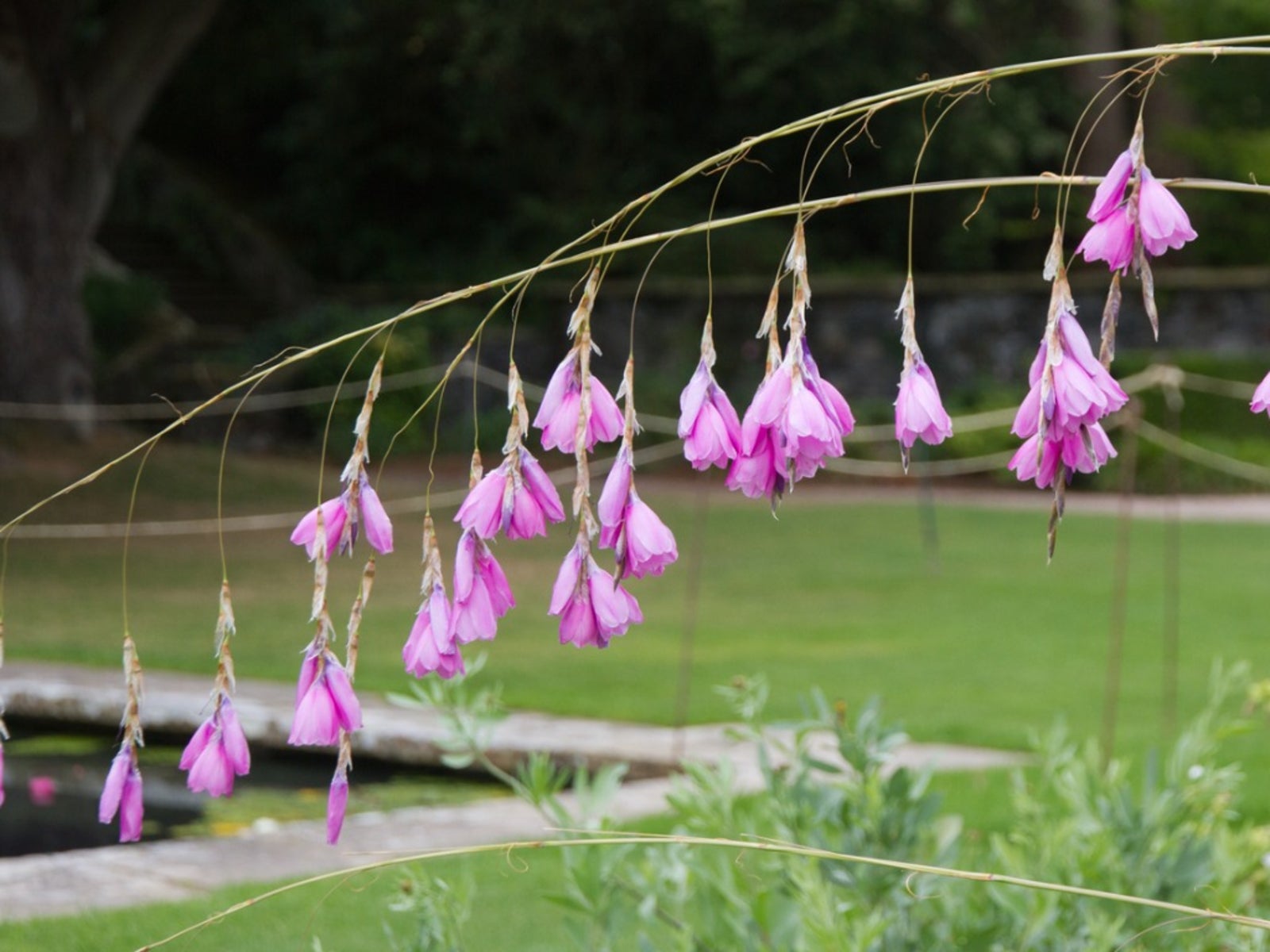Growing Dierama Wandflowers - Tips For Growing Angel's Fishing Rod Plant


Wandflower is an African plant in the Iris family. The bulb produces a grassy type plant with small dangling flowers, which garner it the name of angel's fishing rod plant. There are 45 different species, which are best suited to the warm temperate climate of the United States. Wandflower, or Dierama, is slightly frost tolerant and grows well in USDA plant hardiness zones 7 to 9. Growing Dierama wandflowers provides dramatic form and texture to sunny, well-drained areas of your garden.
Dierama Plants
Dierama plants spring from corms, which are underground storage organs much like tubers or bulbs. The angel's rod fishing plant has delicate bell-shaped pink, purple, or white flowers dangling from the stems. The stems may grow 6 feet (2 m.) in height. The foliage is a long blade type leaf, which forms in a clump and produces plants around 3 feet (1 m.) tall. There are many varieties of the plant, with Dierama pendulum producing one of the largest blooms and is a white winter-growing species. Dierama pulcherrimum comes in a few forms suitable for our climates here in the United States and usually bears soft pink to lavender flowers. The ‘Slieve Donard,' ‘Silver Dawn,' and ‘Alba' cultivars of this species are all medium sized, semi-evergreen plants. There are many other specimens from which to choose, though growing Dierama wand flowers that are less common is usually a hobbyist activity and will need to be special ordered.
Growing Dierama Wandflowers
You can plant Dierama plants from seed but it takes a few seasons to see a truly magnificent plant with blooms. Sow them in a deep pot filled with well-drained soil. Cover the seeds lightly with soil and keep them moderately moist and at least 60 degrees F. (15 C.) for germination. Do not let the seedlings dry out. Transplant seedlings outside after the danger of frost or grow them in a larger pot. Choose a sunny location and provide protection from drying winds. Growing wandflowers from corms is the fasted way to produce blooming plants. Plant them outside or in deep gallon (3.8 L.) pots at least 6 inches (15 cm.) down into loamy soil. Provide moderate moisture and light.
Wandflower Plant Care
Dierama plants in cooler climates do well in large, deep containers and need to be brought indoors when temperatures begin to dip. Store the plants in a cool, dry location and reduce watering during winter when the plants are not actively growing. Wandflowers have no serious pests or diseases and may grow equally well in dry areas or rocky moist soils so long as there is adequate drainage. Plants will slow flower production in around five years, at which time you can dig them up and divide them. Cut the corms apart and plant them in a new pot or garden location. Follow the same wandflower plant care for newly started corms or seeds, when growing Dierama wand flowers from divided corms. Fertilize the plants at the beginning of the growing season with a diluted houseplant food. Follow instructions for wandflower plant care and you will have several years of whimsical drooping flowers and vibrant green foliage.
Gardening tips, videos, info and more delivered right to your inbox!
Sign up for the Gardening Know How newsletter today and receive a free copy of our e-book "How to Grow Delicious Tomatoes".

Bonnie Grant is a professional landscaper with a Certification in Urban Gardening. She has been gardening and writing for 15 years. A former professional chef, she has a passion for edible landscaping.
-
 Grow ‘Karl Rosenfield’ Peony Plants For The Ultimate Frilly Border Beauties And Cut Flowers
Grow ‘Karl Rosenfield’ Peony Plants For The Ultimate Frilly Border Beauties And Cut FlowersFor frilly double magenta peony petals infused with a heady fragrance, grow ‘Karl Rosenfield’ peony plants. Here’s how to cultivate the ultimate plushy blooms
By Tonya Barnett
-
 10 Common Composting Problems That Can Spoil Your Garden Gold – Plus Easy Fixes
10 Common Composting Problems That Can Spoil Your Garden Gold – Plus Easy FixesLearn how to troubleshoot common composting issues before they ruin your stash – from bad smells and bugs to materials not breaking down as they should.
By Susan Albert